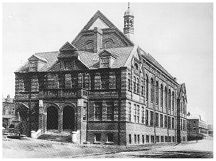
The Royal Mechanics Institute, Horwich
Golden Years

The Royal Mechanics
Institute, Horwich
On 10th
November 1887 a tender of £3140 was accepted for the construction of the
Mechanics Institute. Once built, it
was found that extensions were needed to accommodate the growing number of
students. They were made possible
by the efforts of John Aspinall and by a gift from the widow of Samuel Fielden a
former L.Y.R. director.
The
extension, which was known as the ‘Samuel Fielden Wing’, included a library,
a hall to seat 900 and several classrooms.
It was opened in July 1893. when
the Institute was first opened it h ad a total attendance of 90 students. Fees were normal but were doubled if a student failed to
attend 21 classes in each subject.
CRICKET CLUB
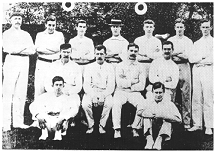
Members
of the Cricket Club
It was
agreed at a meeting on 12th September 1891 that the R.M.I. team would
amalgamate with the town team, and that the R.M.I. team would supply the ground.
The first match was played to mark the opening of the new recreation
ground on 23rd April 1892. entrance
fees were 3d for men; 1d for OAPs and women were admitted free.
As a point of interest, the Horwich Amalgamated Cricket Club lost their
first match against Little Lever by 22 runs.
The team is currently a successful member of the Bolton Cricket League.
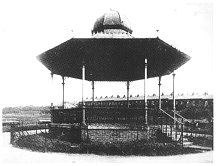
By 1891 the
population of Horwich had grown to 12 850, a massive increase of 9 089 in ten
years. In 1892 two directors of the
L.Y.R., William Hinmer and Henry Yates Thompson, provided the flourishing new
town with a recreation ground. This
contained a cricket ground, a children’s playground, tennis courts and two
bowling greens. Henry Yates
Thompson also provided the town with it’s cottage hospital in 1894, and the
bandstand for the recreation ground in 1907.
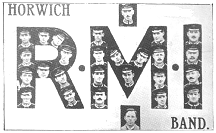
In 1912
George Hughes, who was then the C.M.E. of the L.Y.R., decided to form a first
class brass band. Only one member
of the old Lancashire and Yorkshire Band passed the audition.
The other members were recruited from the Black Dyke, Irwell Springs and
Foden’s brass band’s. In 1915
the band finished second to Foden’s at Belle Vue.
In the same year, after a strike at Elworth (Foden’s Factory), a dozen
players who had been prominent in the picket lines were fired.
They promptly moved to Horwich and took great pleasure in beating their
old firm at Belle Vue in 1916 and 1917.
The
band’s crowning achievement was the winning of the Crystal Palace competition
on 23rd September 1922.
They became “Champions of the Great Britain and the Colonies” and won
the 1 000 guineas trophy.
Thereafter,
the band played many summer engagements at various holiday resorts on the south
coast. Unfortunately,
due to the recession and subsequent lay-off of its’ members, Horwich R.M.I.
Band collapsed as a concert band in 1931.
In the intervening years, they were something of a legend.
THE FOOTBALL TEAM
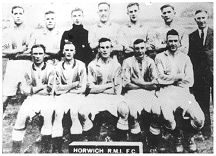
The
football team was founded in 1896 under the name of the “Railwaymen”.
The contemporary works team now plays its football in the Northern
Premier League.
THE L.Y.R. CAFÉ AND DINING HALL
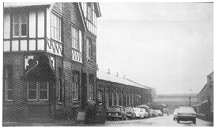
The board
approved a tender of £1 627 to provide a dining hall at the junction of Gooch
Street and Chorley New Road.
THE FIRE BRIGADE
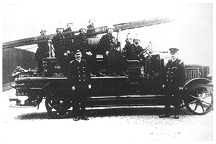
The Horwich
Fire Brigade was another community benefit maintained at the expense of the
L.Y.R.
SIR NIGEL GRESLEY
An example
of a man who served his apprenticeship at Horwich and later went on to win great
respect for his work was Herbert Nigel Gresley, who moved from Crewe to Horwich
to complete his apprenticeship under Aspinall.
“MALLARD”
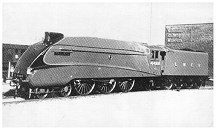
On
3rd July 1938 on of his A4 class streamlined locomotives,
“Mallard”, broke the world record for a steam locomotive achieving 126 mph,
whilst hauling a seven-coach train weighing 240 tons.
VICTORIA MILL
Until 1884
it can be said that Horwich was an industrial backwater relative to other towns
in the area. However, the arrival
of the L.Y.R. was to bring Horwich into a new era.
Following
the railway “mania” came a revival and expansion of the local cotton
industry which was associated with the influx of labour encourage by the L.Y.R.
One of the most successful mills was Victoria Mill, built in 1904.